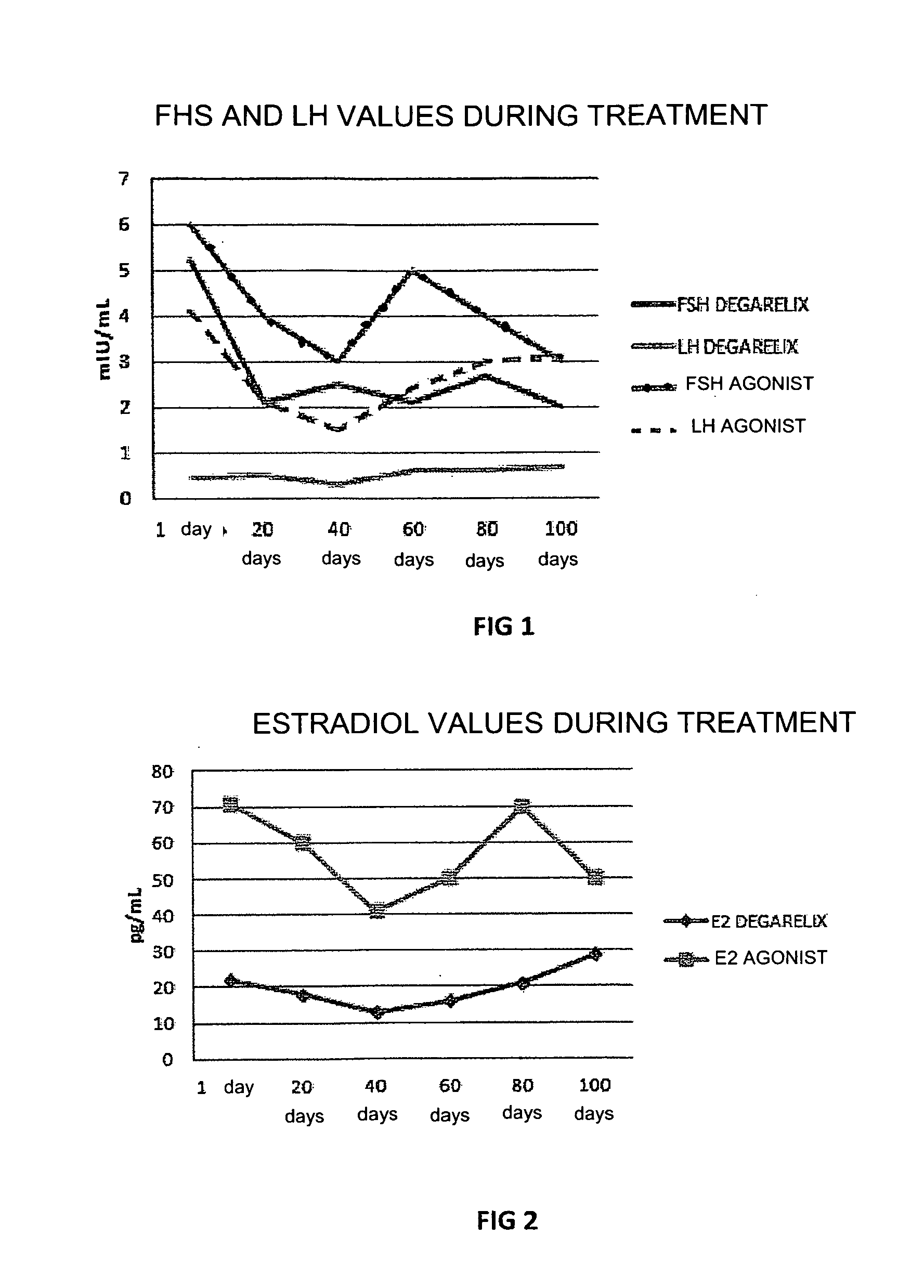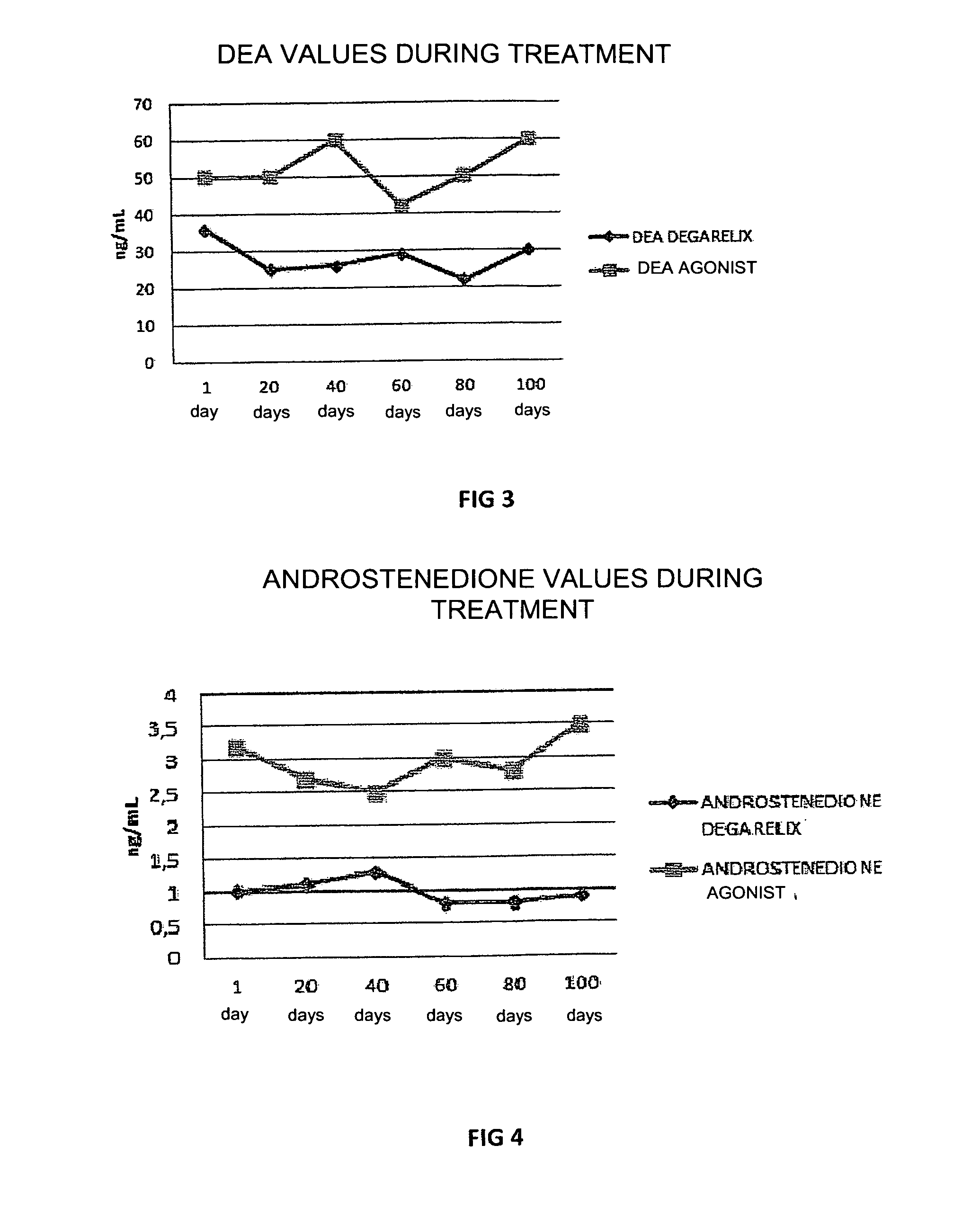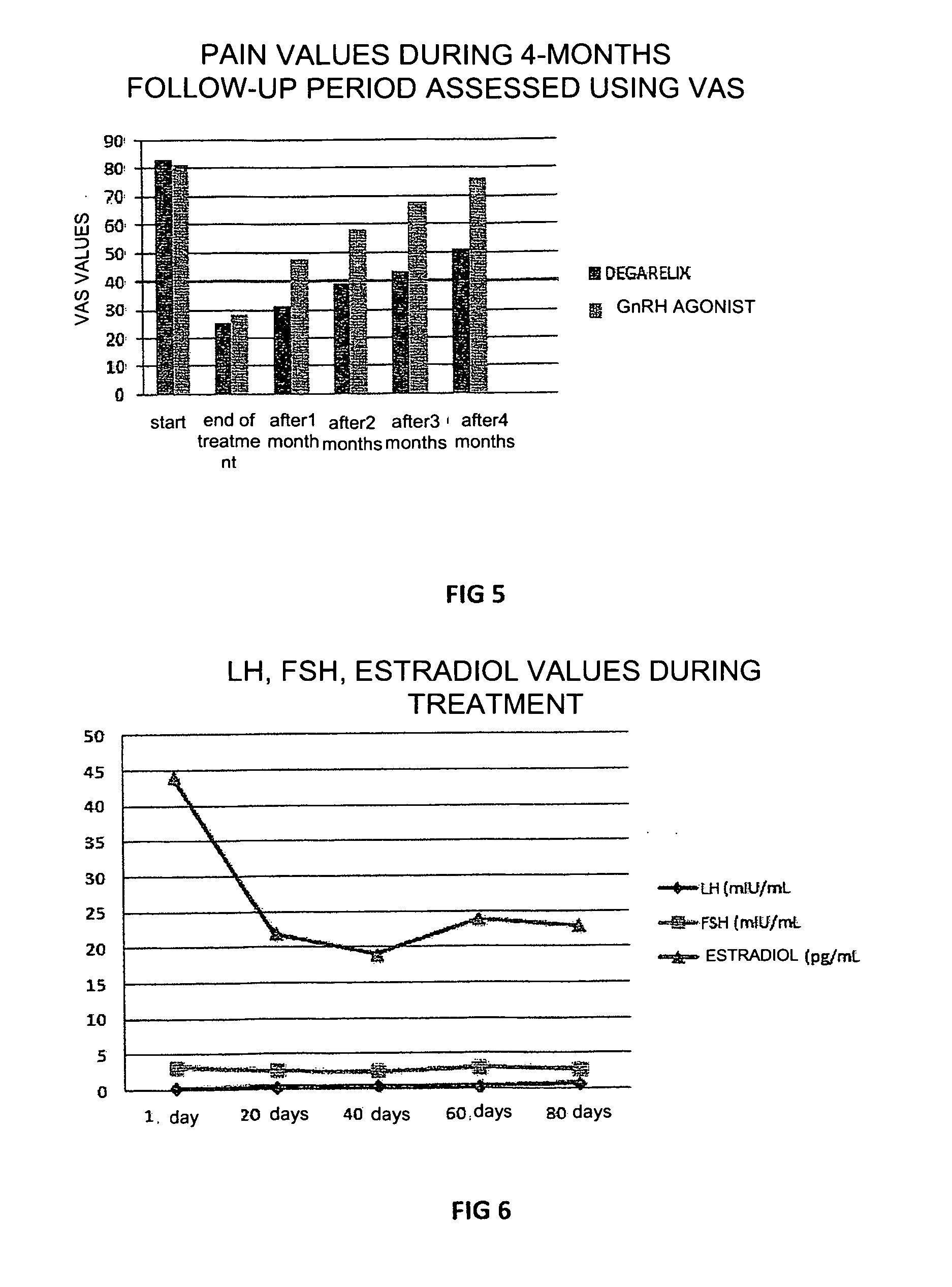Use of degarelix in the treatment of endometriosis and related diseases
a technology of endometriosis and degarelix, which is applied in the field of active principle degarelix in the treatment of gynaecological diseases, can solve the problems of many investigations, loss of working time, and high cost of diagnosis and invasiveness of endometriosis, and achieve rapid and marked hypoestrogenism
- Summary
- Abstract
- Description
- Claims
- Application Information
AI Technical Summary
Benefits of technology
Problems solved by technology
Method used
Image
Examples
example 1
[0046]In this experiment the use of degarelix was studied, administered in a dose of 80 mg in a single infusion, with an effect which lasted for at least 4 months (period of amenorrhea and hypoestrogenism), comparing this with the effect of treatment with leuprolide acetate GnRH-agonist administered in a dose of 3.75 mg per month for at least 6 months in women with recurrent endometriosis after surgery and post-surgery treatment with estro-progestins.
[0047]30 women divided into two groups of 15 patients each, with recurrent endometriosis after previous surgery for endometriotic cysts, in whom new ovarian cysts, pelvic pain and a rise in plasma CA125 values occurred, were included in the study. One group of patients was treated with 80 mg degarelix acetate in a single subcutaneous injection (Firmagon 80 mg, company Ferring) on the first day of the menstrual cycle, while the other group was treated with leuprolide acetate (Enantone 3.75, Takeda) in a dose of 3.75 mg subcutaneously eve...
example 2
[0050]In this experiment, 12 patients suffering from endometriosis with the presence of bilateral ovarian cysts who wished to receive a cycle of assisted reproduction underwent, prior to undergoing controlled ovarian hyperstimulation, treatment with 80 mg degarelix acetate in a single administration 4 months before the assisted reproduction cycle, in order to evaluate the efficacy of this treatment on the reduction and / or disappearance of the ovarian cysts without performing surgery.
[0051]12 patients with bilateral endometriotic cysts (cysts larger than 3 cm) and high plasma CA125 (over 60 IU / ml) were selected. 80 mg degarelix acetate (Firmagon 80 mg) was injected into the patients on the first day of the cycle and the patients were then monitored for FSH, LH and estradiol values every 20 days, with an echography check to evaluate the dimensions of the cysts.
[0052]As shown in FIG. 6, low levels of FSH, LH and estradiol were still present 3 months after treatment, while the volume of...
PUM
| Property | Measurement | Unit |
|---|---|---|
| aqueous solution | aaaaa | aaaaa |
| magnetic resonance | aaaaa | aaaaa |
| sizes | aaaaa | aaaaa |
Abstract
Description
Claims
Application Information
 Login to View More
Login to View More - R&D
- Intellectual Property
- Life Sciences
- Materials
- Tech Scout
- Unparalleled Data Quality
- Higher Quality Content
- 60% Fewer Hallucinations
Browse by: Latest US Patents, China's latest patents, Technical Efficacy Thesaurus, Application Domain, Technology Topic, Popular Technical Reports.
© 2025 PatSnap. All rights reserved.Legal|Privacy policy|Modern Slavery Act Transparency Statement|Sitemap|About US| Contact US: help@patsnap.com



